Specialized has been steadily growing their selection of electric bikes since 2012, and the Como is their latest offering. I was told that this model was named after Lake Como in Italy, and to me that’s a fitting name because this region is known for being prestigious and beautiful. The Como electric bikes tend to be more expensive, but are beautiful, quiet, powerful, and feature-rich. The 2.0 is their entry-level offering and doesn’t include a high-capacity battery, integrated light or 10-speed drivetrain like the 3.0 or a high-capacity battery, suspension fork, fenders, rear rack and 11-speed drivetrain like the 5.0 model. Whether you get the 2.0, 3.0, or 5.0 there is some choice about frame size and style. The bikes I tested were both low-entry (also called low-step or step-thru) and one was a Large in Blue and the other was a Small in Pink. It’s a great platform for his and hers riding where partners can stick together more easily and leave concerns about hills and wind behind. Specialized also offers the Turbo Levo (which means I lift in Italian) and Turbo Vado (which means I go in Italian). The Levo is a mountain bike and the Vado is more of a commuter or urban platform while the new Como is a cruiser. Notice how the front fork is raked out, the tires are a bit wider to improve stability and comfort, and the saddle, swept back bars, and ergonomic grips are providing a more upright relaxed body position. What really caught my interest here, beyond aesthetics and accessories, were the stiff thru-axles, sturdy but approachable frame design, and reflective tires and rims. So many step-thru models feel flexy or compromise on quality because they are trying to be inexpensive. What you end up with in some cases, is a rear-heavy bike with rattly parts, a cheap drivetrain and more limited range. Even the entry-model Turbo Como 2.0 has a 9-speed Shimano Alivio derailleur that is three steps up from the base and the same motor hardware as the two higher-specced models. It’s a bike that delivers something that will last and can be found, test-ridden, and serviced at a vast network of dealers around the US.
Driving the bike is a custom-tuned Brose mid-drive motor. It’s very compact, relatively lightweight at 6.61 lbs, and fluid to pedal with. None of the Specialized Turbo models offer throttle mode, they use an array of sensors to measure your rear wheel speed, pedal cadence, and pedal torque and respond near-instantly. Rated from 250 watts to 530 watts, this motor can be zippy and very capable when climbing if you switch gears thoughtfully. The peak torque output is 90 Newton meters which makes it one of the highest I have tested. The motor hardware is called Brose Drive S (which stands for sport) but Specialized has adjusted some of the tuning so that it performs more to their liking and renamed it “Rx Street Tuned”. I found it to be peppy and incredibly responsive when I stopped pedaling. Some e-bikes can have a delay when you start and then stop pedaling because their sensors are more limited or the controller just isn’t as sophisticated. With the Turbo Como series, you’re getting one of the best drive systems and controllers around, made by Brose which is a German automotive company. One of the design features that really sets it apart is the inclusion of a Gates Carbon Belt system that reduces noise and the feeling of vibration that some gear-only systems are known for. You can still hear the motor when operating with the highest level of assist and pedaling quickly, but I admit that it’s one of the most quiet and fluid designs I have tested so far, and not just on the Turbo Como, but on all of the Brose powered models. Of course, when you’re accelerating quickly and dealing with increased frame weight (due to the battery and other e-bike specific systems) stopping is also important. For this, the bike offers hydraulic disc brakes by Tektro with a 180 mm rotor in the front and 160 mm rotor in the rear. They are easier to actuate than mechanical disc brakes and the levers can be adjusted easily for reach, making them somewhat easier to use for people with small hands or those wearing gloves.
The battery pack design offered for all Specialized Turbo Como models looks the same, but with the 2.0 trim level you get a lower capacity from cells that aren’t as energy dense. It offers 36 volts and 12.8 amp hours for a total of 460 watt hours vs. 504 watt hours on the 3.0 and 5.0 models. In my experience, 460 wh is still close to average in terms of capacity and it makes the bike lighter and cheaper. Compared to a hub motor driven electric bike, you tend to get better range regardless of battery capacity because a mid-drive can operate very efficiently as you switch gears. The key is to shift down when climbing and up a bit when riding faster so that the motor doesn’t have to overwork. One trade-off here is that shifting under power (both your leg power and the motor power) can wear the chain, sprockets, and derailleur out more quickly than a hub-motor ebike or a non-electric bike. And, the Brose system doesn’t offer any kind of shift detection to ease-back and protect the drivetrain the way that Bosch and Impulse do. I have found that you can manually ease-off when pedaling and shifting to alert the motor to back off, and this makes it smoother. Just like the motor, the battery pack has been customized by Specialized and is paint-matched to blend in. Rather than seating in from the top, they designed a pack that sort of slides in from the left side of the frame. This allows the top tube to be lower, making the bike easier to mount and stand over. The pack can be charged on or off the frame and uses an ABUS key which comes with a code for use in matching lock accessories (like folding locks, chains, or u-locks to keep your bike safe). It’s a neat touch, one that could help you reduce clutter while protecting the bike. One thing I really like about this new pack design is that they are using the magnetic Rosenberger charging standard and have a little cover that keeps it clean on the side of the bike… with a plastic leash so you won’t misplace the cover! So many other electric bikes that use this charging standard do not have a leash for the cover and people end up setting it down and losing it easily. The motor, battery, and display are all designed to be water resistant regardless, but I like to keep my stuff clean and beautiful looking, so the black cover is worth keeping track of. I should also note that the charging end of the ebike charger is magnetic and can pick up some metal filings if dropped onto garage floors or some sandy environments. Just keep an eye on this, and take good care of the charger because it’s super nice, offering a faster 4-Amp charging speed… though Specialized does also sell a compact 2-Amp charger for travel situations where weight and space are priorities.
The display panel on the Turbo Como is a big win in my eyes because it’s large, allows you to control backlighting, has an integrated Micro-USB charging port (for your phone, which might be running the Specialized Mission Control app) and is removable! It offers plenty of realtime feedback about speed, battery charge level, assist level, and trip stats like distance, and can be operated while holding the left grip and just reaching your thumb over to press the compact control ring. Unfortunately, it appears that you must turn the bike on by pressing a power button on top of the battery pack vs. a button on this control ring… and that requires some reaching or planning. It’s a minor gripe, but made a little worse from the slow startup of the display. I found myself tinkering with it, trying to get it to turn on faster, and was told that you can press the Set button on the top of the control ring to make it go faster possibly. Other secrets include holding the + button for walk mode, and holding the Set button to enter into the menu where you can pair the bike with your Smartphone using Bluetooth for the Mission Control app. This app allows you to further customize power output from the motor in each level of assist or plan rides in a way that the battery will not run out (the bike will automatically provide power based on how far you have yet to travel). It’s one of the cooler apps, but it’s completely unnecessary to just get on and ride. If you do plan to use your phone a lot, for GPS and the app, or simply want to go further, the 3.0 and 5.0 models with that larger battery might be worth considering. I shot this review with Charlie McCormick from ElectriCityBikes.com, a shop in Washington DC, who told me that he had traveled 20 miles with just one bar on the battery infographic (of which there are 5) and he used that experience to estimate a range of 100 total miles per charge. Now, this all comes back to your weight, how much you pedal, the terrain etc. but Brose motors are known for being power sippers.
This review was neat because it was filmed at one of the Ebike Expo events that happen around the United States, allowing people to come and take test rides. I got some feedback from a couple of ladies before filming and then from a couple of gentleman after filming who all enjoyed this bike and loved the way it looked. Big thanks to them and the organizers of the Expo events for providing such a cool opportunity to go ride. You can learn more about ebike events in the EBR Forums here and I welcome your own feedback in the form of comments here. For those who do wish to add some lights, fenders, or a rack aftermarket, I believe the threaded eyelets and bosses on this bike would allow you to do so and Charlie explained that his shop and others would know how to do this and would have some different choices of hardware. We talked about how a suspension seat post might improve back and neck comfort on the 2.0 model (which does not have a suspension fork) and I wanted to point out that this would raise the minimum saddle height and possibly limit the ability for some riders to “flitstone” along, putting their feat down for stability without getting off of the saddle. I found the bike to be comfortable enough on smooth pavement and appreciated how sturdy it felt overall. The weight was well distributed having used similar hardware on other bikes in the past, I feel that this bike would be durable over time. Do keep in mind that the battery could be more expensive to replace because it is custom colored, and that you can take care of it by storing in a cool dry location and avoiding extreme heat and cold.
Pros:
- The addition of fender bosses, rear rack bosses, and even two pairs of bottle cage bosses allow this bike to transform from a neighborhood cruiser into a commuter, the position of the bottle cage bosses on the top tube is way up high so it will not get kicked as easily as you step-thru to mount the bike
- Available in two frame sizes to fit a wider range of body types, the “low-entry” frame is meant to be easy to mount and stand over regardless of size
- Beautiful matching touch points (saddle and grips) with an emphasis on comfort, ergonomic grips and wider comfort saddle compliment the fatter 2.3″ tires
- I was told that some shops can help you add integrated lights that will be powered by the main battery pack but regardless, the reflective tires provide increased safety and there are even reflective stickers on the rims!
- The Brose Drive S motor is known for being quiet and feeling natural, it’s a great fit for neighborhood riding but also provides high torque for climbing, up to 90 Nm vs. 60 Nm on many other mid-drives
- Sometimes step-thru electric bikes don’t feel as stiff and sturdy because they might have a rear-rack battery or a single downtube but the Como has two tubes and positions the battery in the downtube to improve stability and it felt stiff and stable during my ride tests
- The battery blends in perfectly with the frame, it’s paint-matched and pops out on the left side vs. upwards so you won’t scratch the finish, the display panel is also removable for protection
- The price is pretty good and you get a premium drive system and beautiful bike, Specialized has a large network of dealers in the USA and provides a two year comprehensive warranty
- Electric bicycles tend to weigh more on average but the Como is not bad at ~48 lbs, in part because it doesn’t come with fenders or lights and the battery isn’t super big
- Stopping is very important when you’re riding a bit faster and dealing with increased bike weight so the hydraulic disc brakes used here were a great choice, the front brake is larger because momentum shifts forward when stopping and you need extra power there, the levers offer adjustable reach for people with smaller hands or those wearing gloves
- It’s nice to have style choices and Specialized offers two colors which are decidedly his and hers, I know many ladies who might not want to super bright pink used here… but I am sure future model years will expand to different colors and the blue is pretty neutral, notice how the cables and wires are internally routed and the frame looks super smooth and clean
- The display panel has a Micro-USB port built into the bottom so you can connect your smartphone to charge on the go, and the bike is compatible with the Specialized Mission Control App which allows you to plan rides and track performance or adjust the levels of assist
- The battery charger for this bike puts out 4 Amps which is about 2x as fast as many other generic electric bike chargers, I like that the plug itself uses magnets and won’t bend or tip the bike if you trip over the cable (it will just pop out easily) and the cover for charging port on the side of the battery has a nice little cover with a leash so it won’t get set down and lost so easily
- The motor controller measures rear wheel speed, pedal cadence, and pedal torque super fast (in milliseconds) and I noticed that the chainring spun down almost instantly when I stopped pedaling, this created a sense of control for me that some cheaper mid-drives lack
Cons:
- The kickstand has more pointed end that can punch into grass vs. holding the bike up, it looks cool but doesn’t work as well on soft surfaces
- As comfortable as the swept back bars, padded saddle, ergonomic grips, and larger tires are… the bike cans still feel jarring if the street is not smooth and the tire pressure is super high, heavier riders (or those using a rear rack for cargo) should still keep the pressure high but might consider a 30.9 mm diameter suspension seat post like this to soften up the ride (but keep in mind that it will raise the minimum saddle height by a few inches)
- Minor complaint here, the chainring does have a plastic guard to keep your pants or dress from touching but I feel that it only covers a limited area and that a more complete chain cover would be ideal for a step-thru like this because the rear portions of the chain are still completely uncovered
- The on/off button for the bike is built into the top of the battery pack and for me, that requires a bit of extra effort to reach and press vs. a power switch on the control pad up on the handlebar, the display also takes longer to fully boot up than some competitors (you may be able to speed it up by pressing the top button on the control pad)
- The motor uses a standard sized chainring and has a freewheel so there’s less friction and drag when pedaling than TTIUM or Bosch Performance Line but it does not offer shift detection, if you ease off the pressure of pedaling when shifting the motor will also back off and that will reduce drivetrain wear

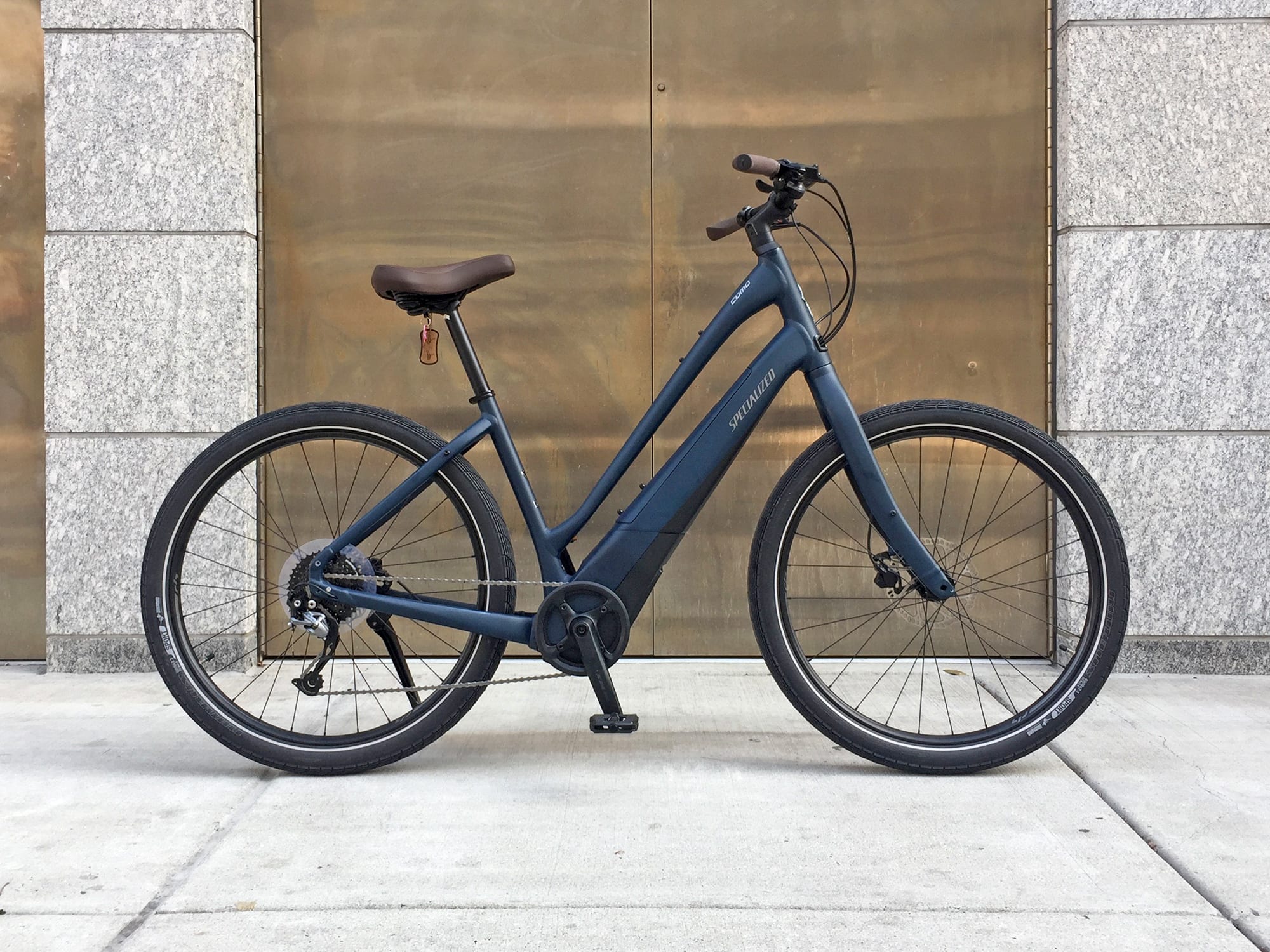
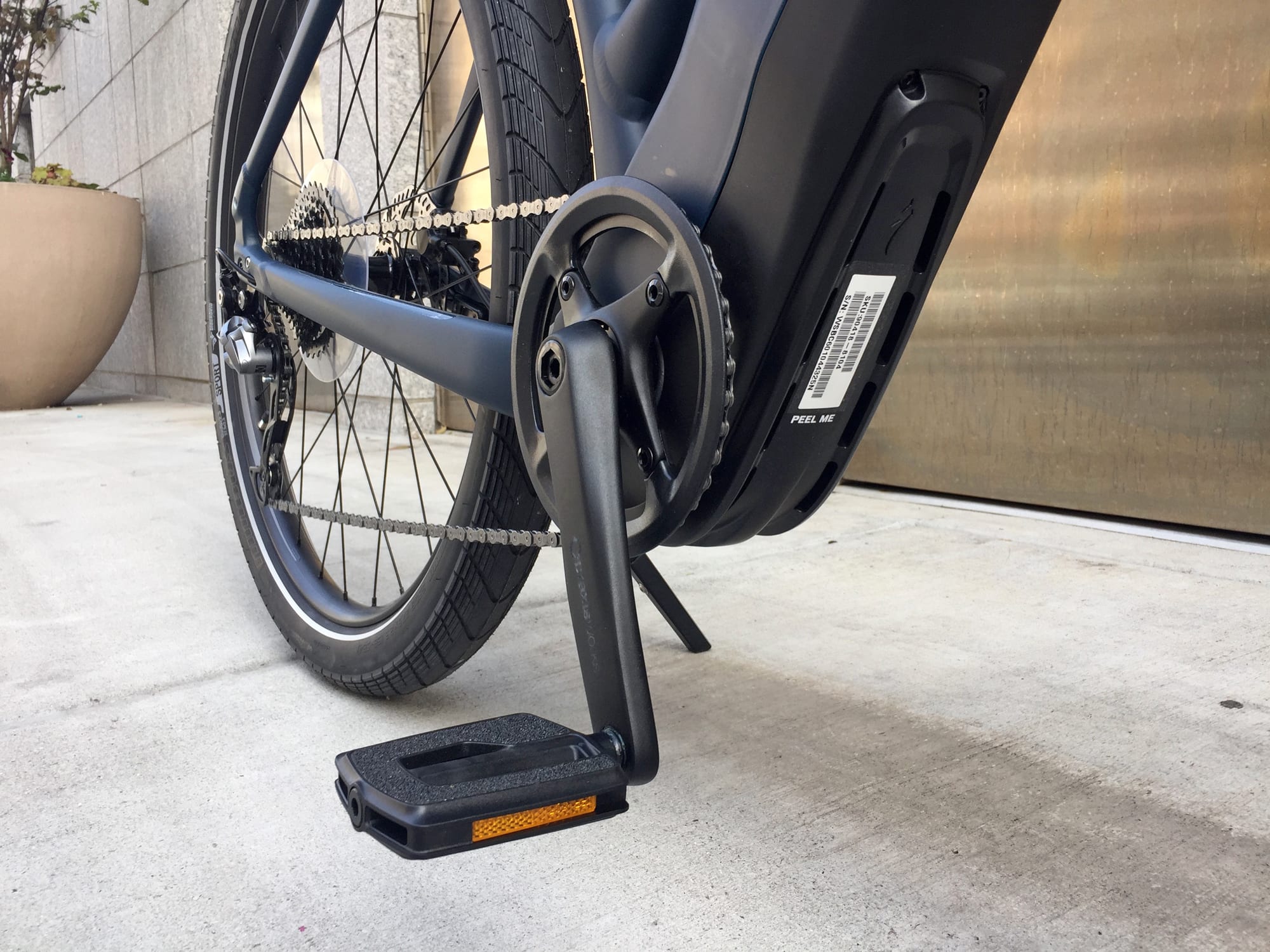
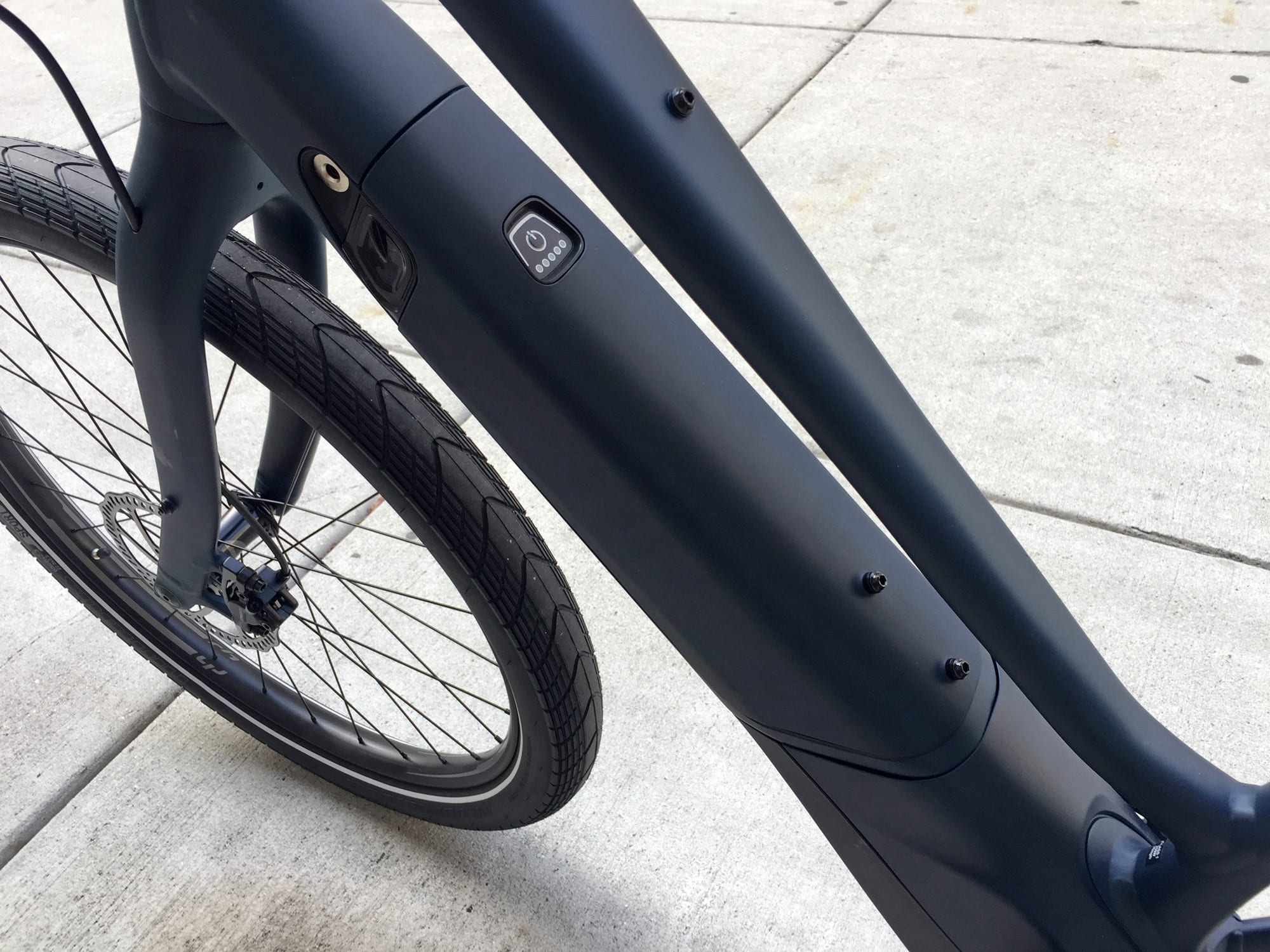
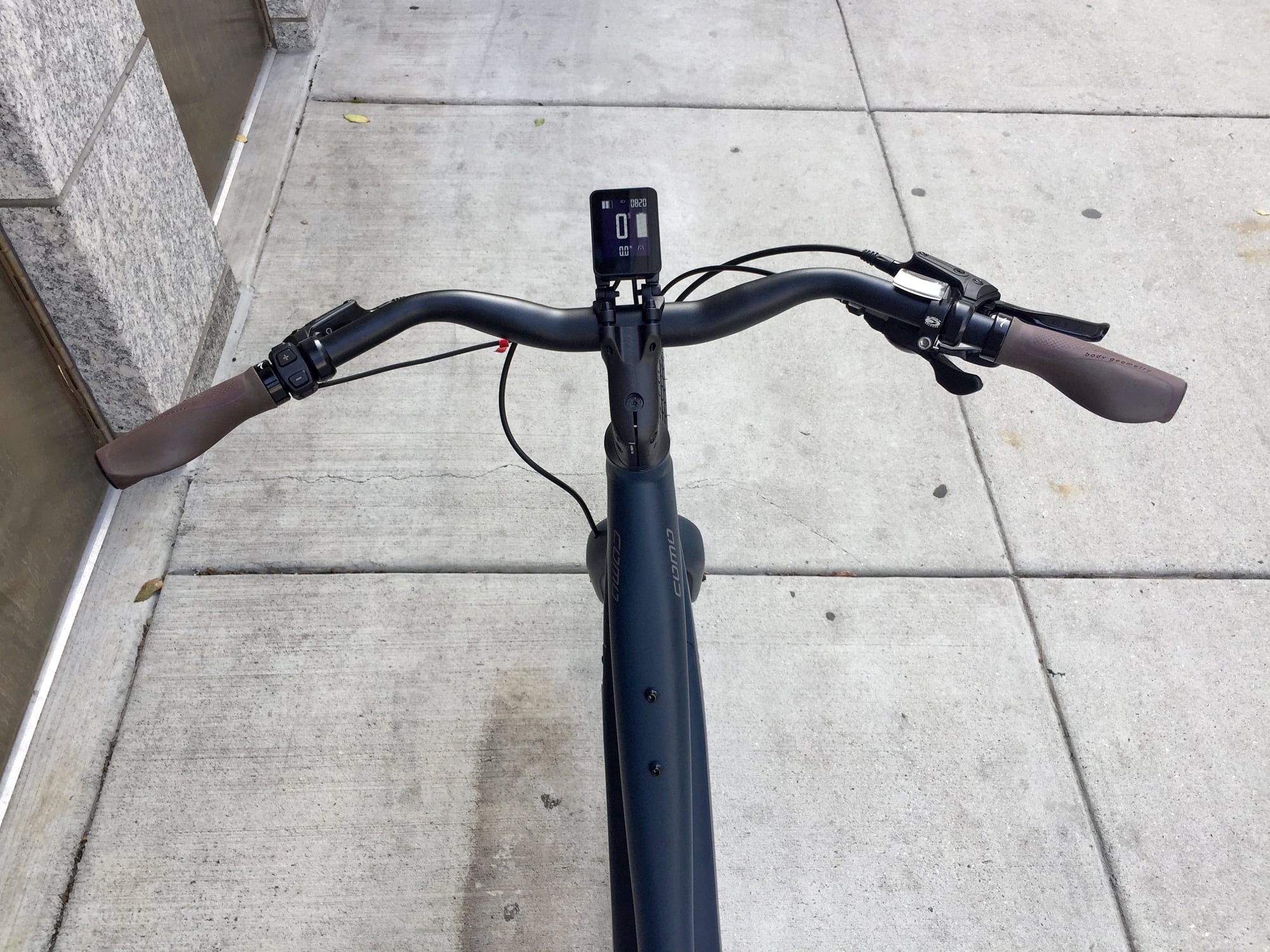
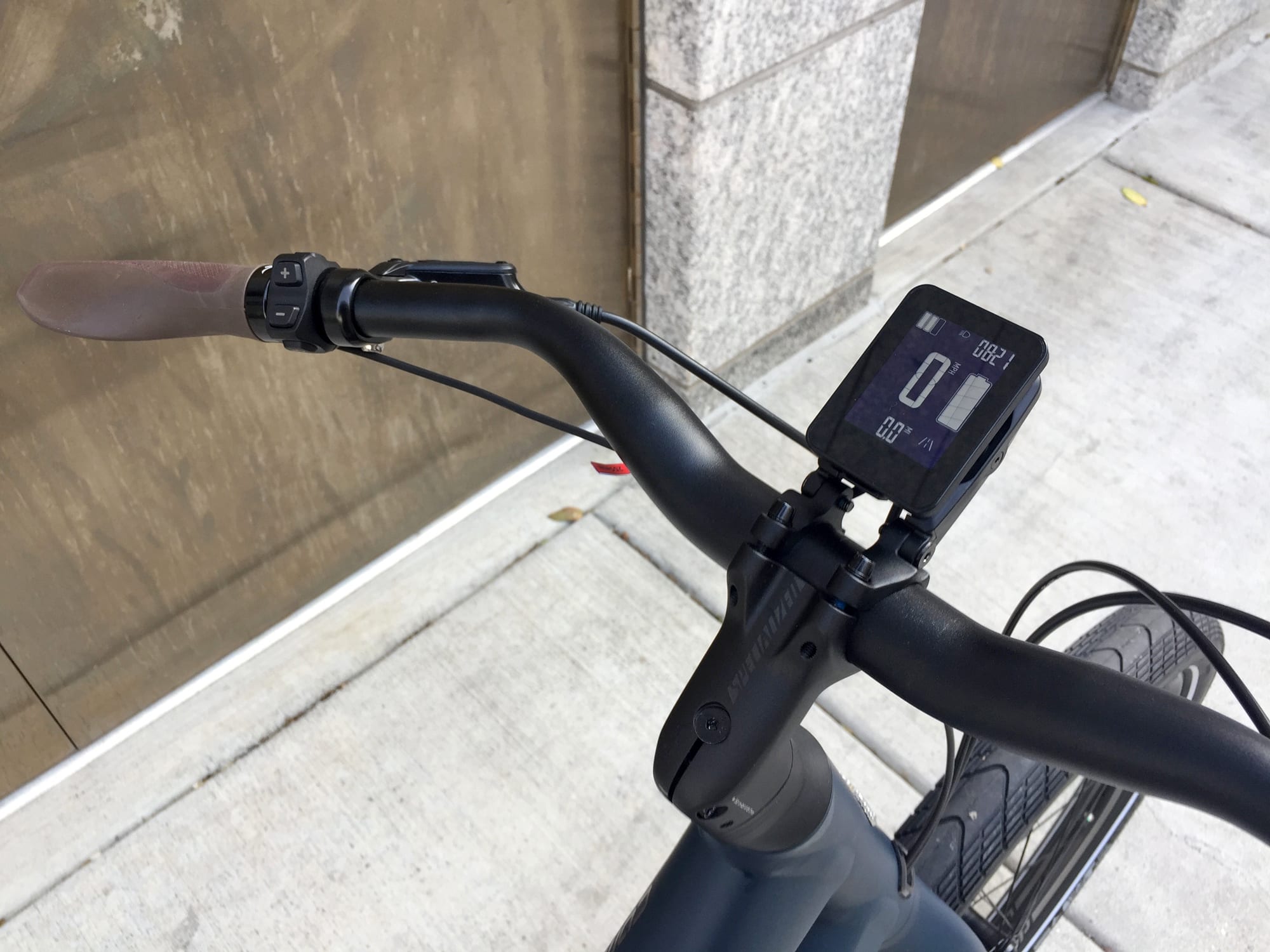
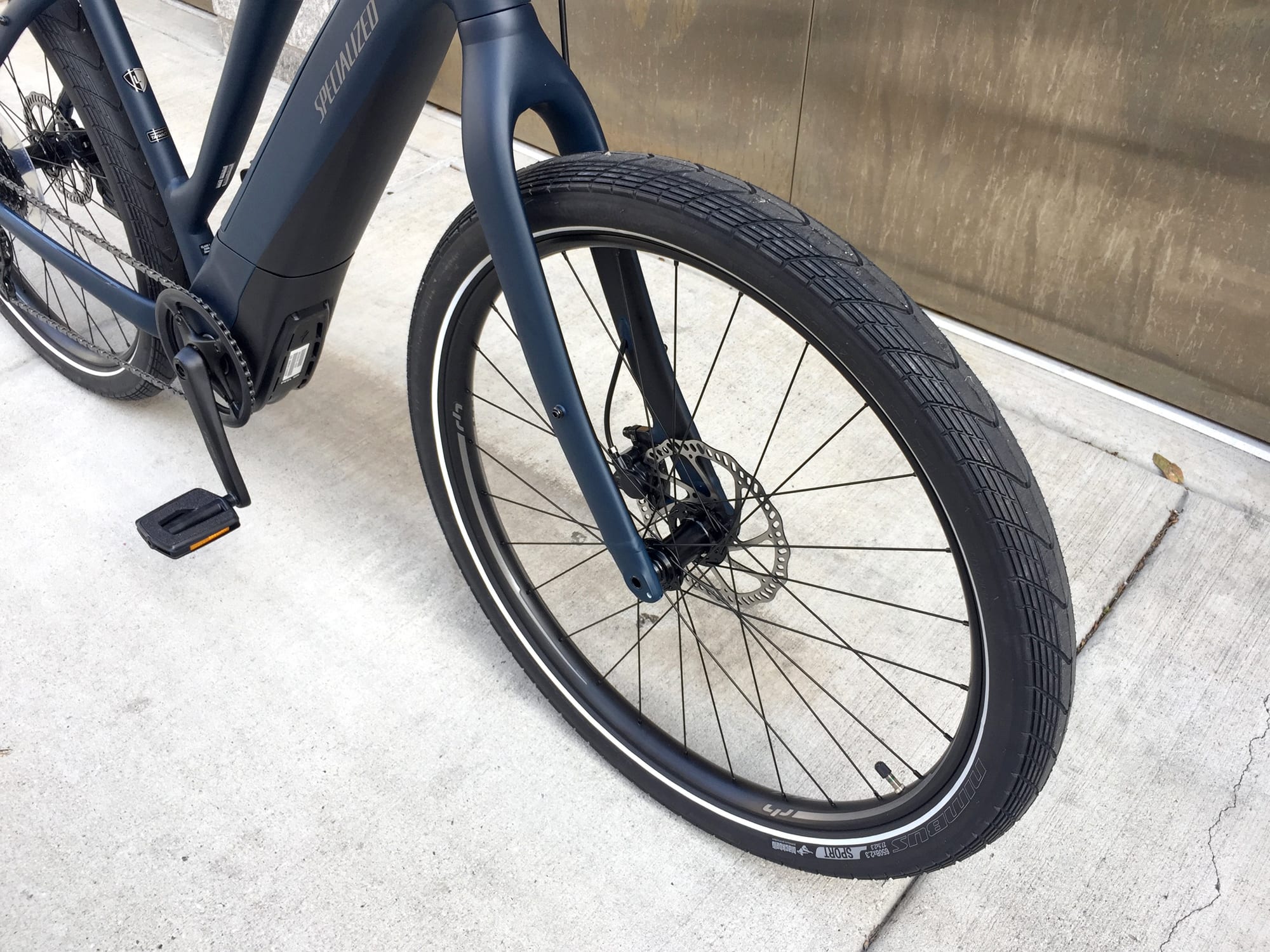
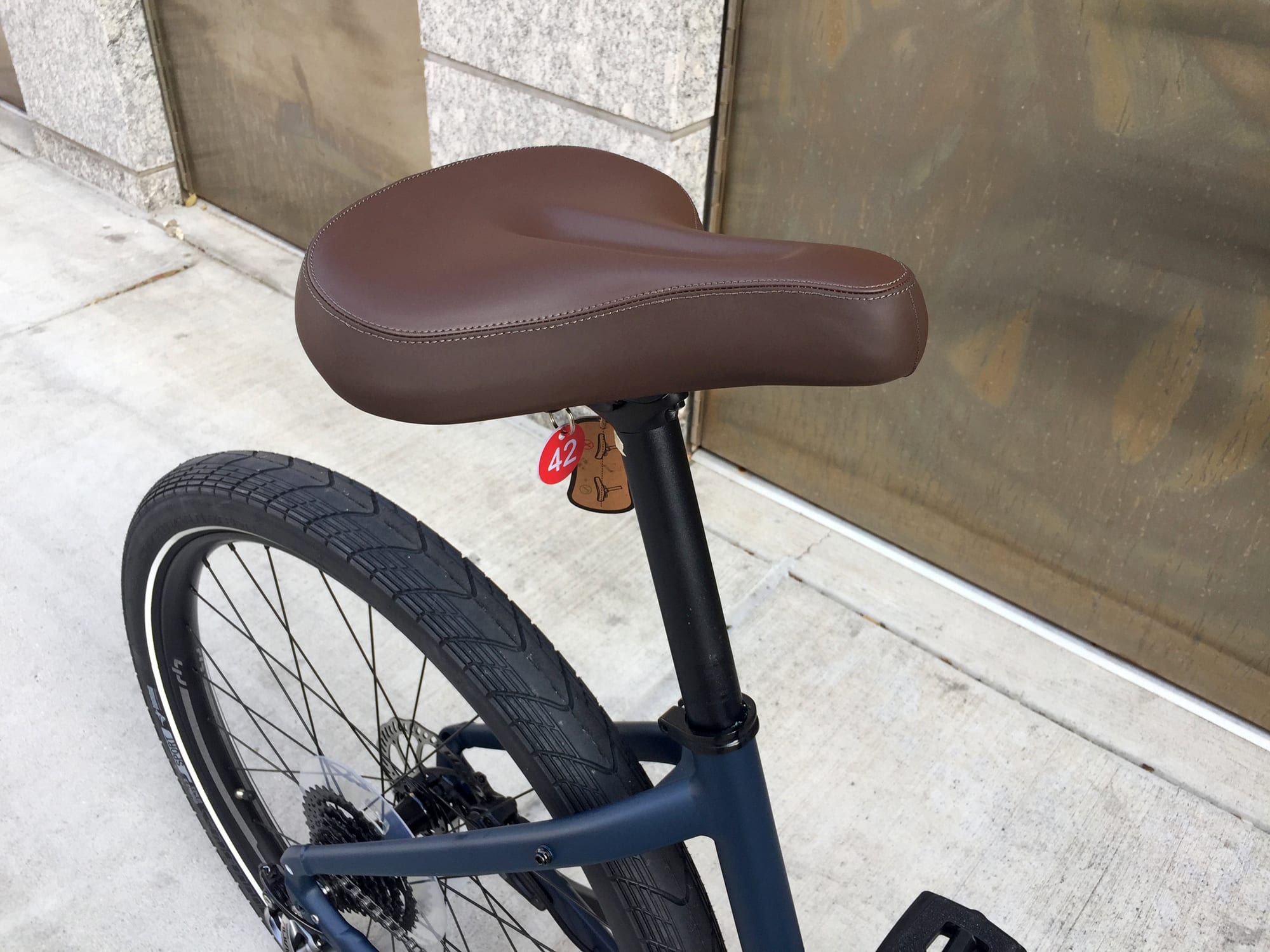
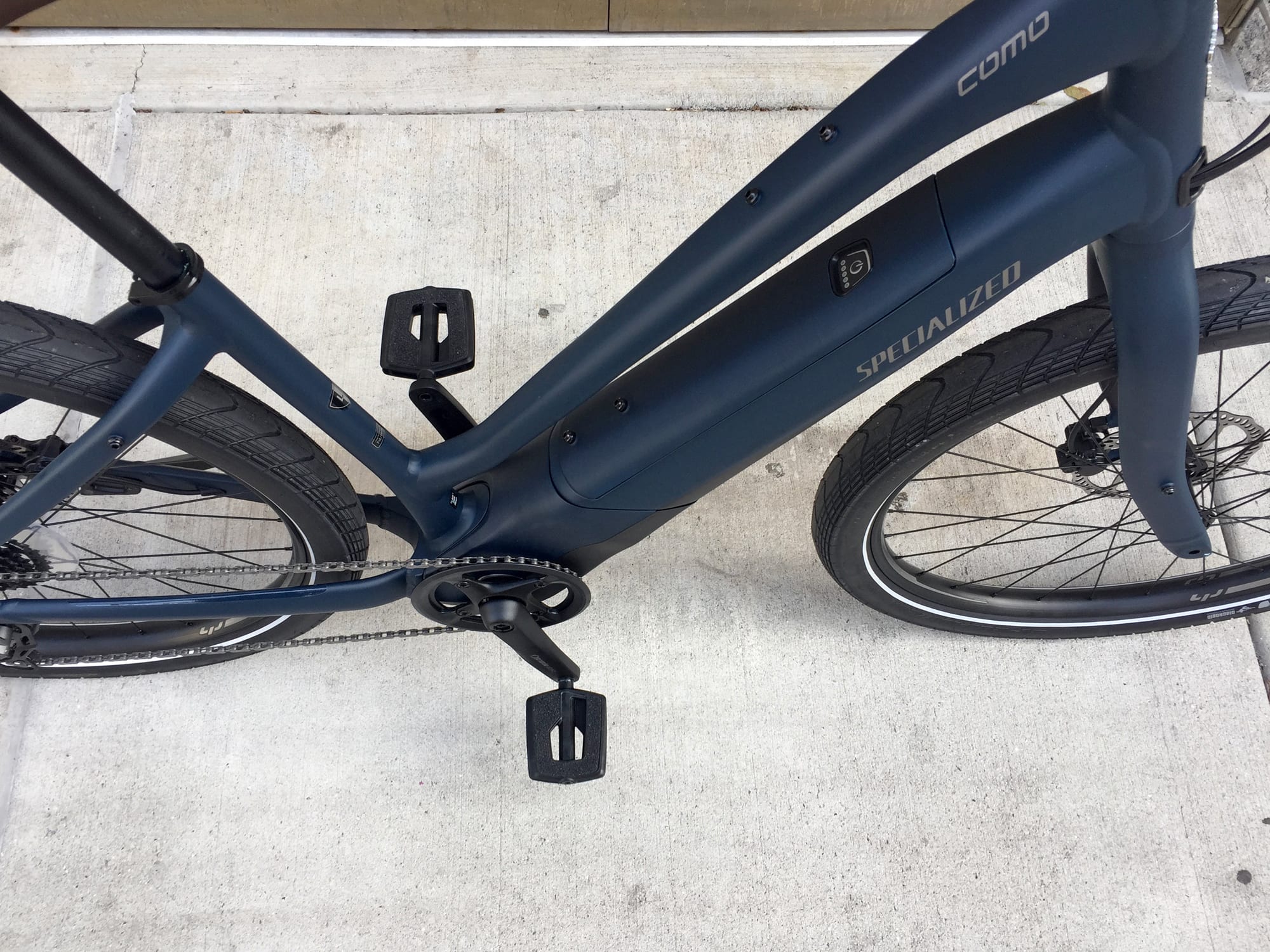
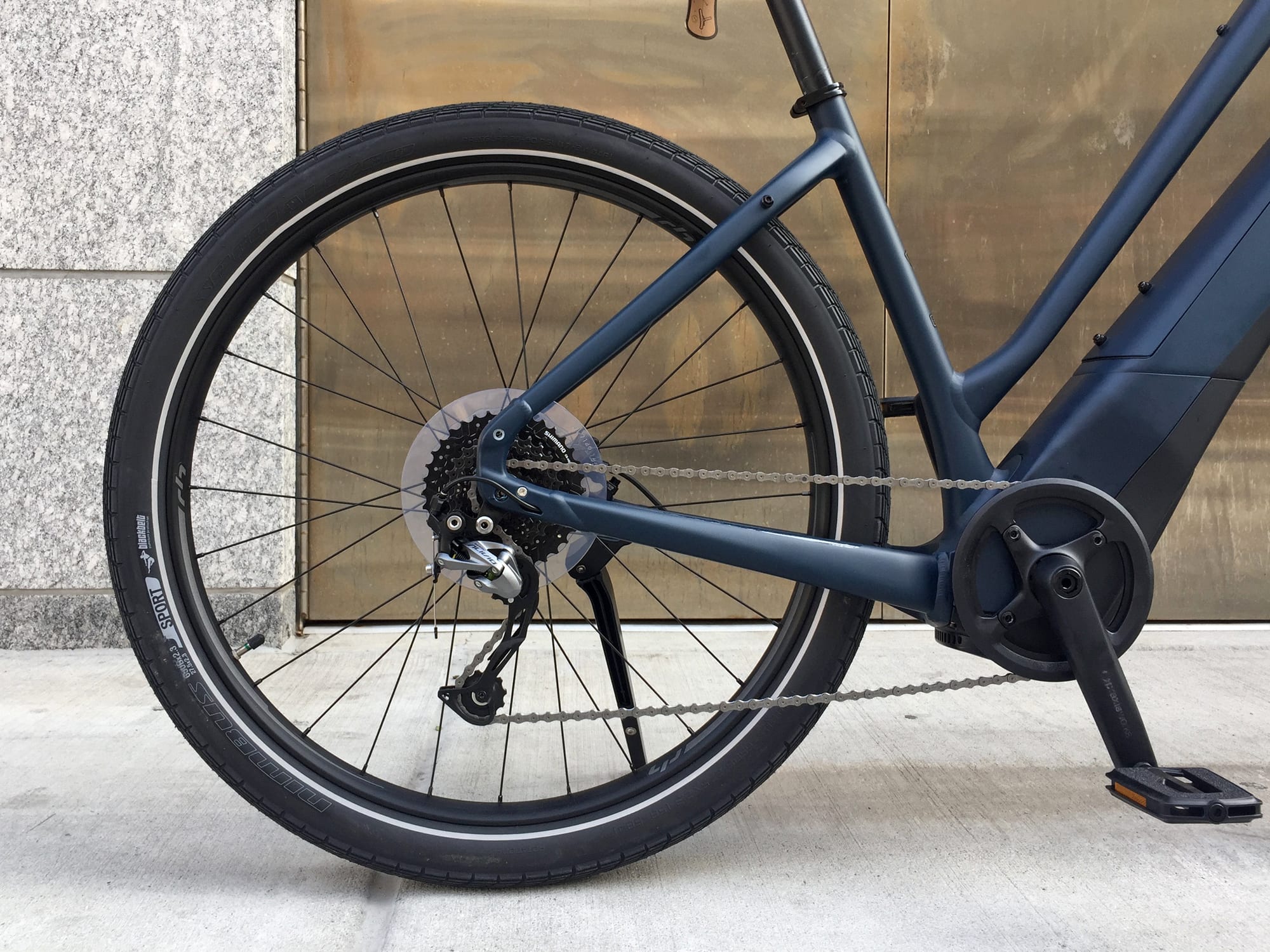
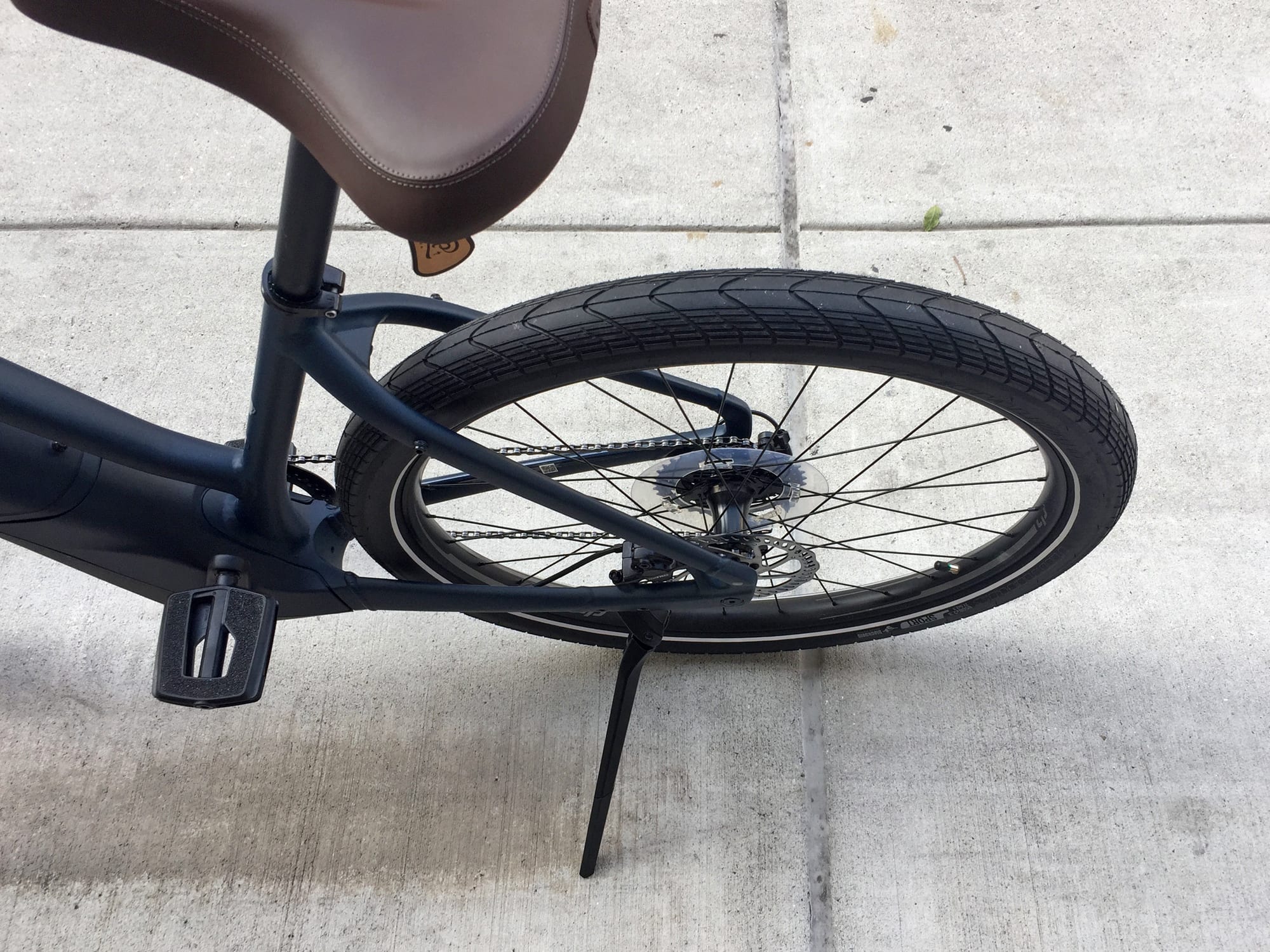
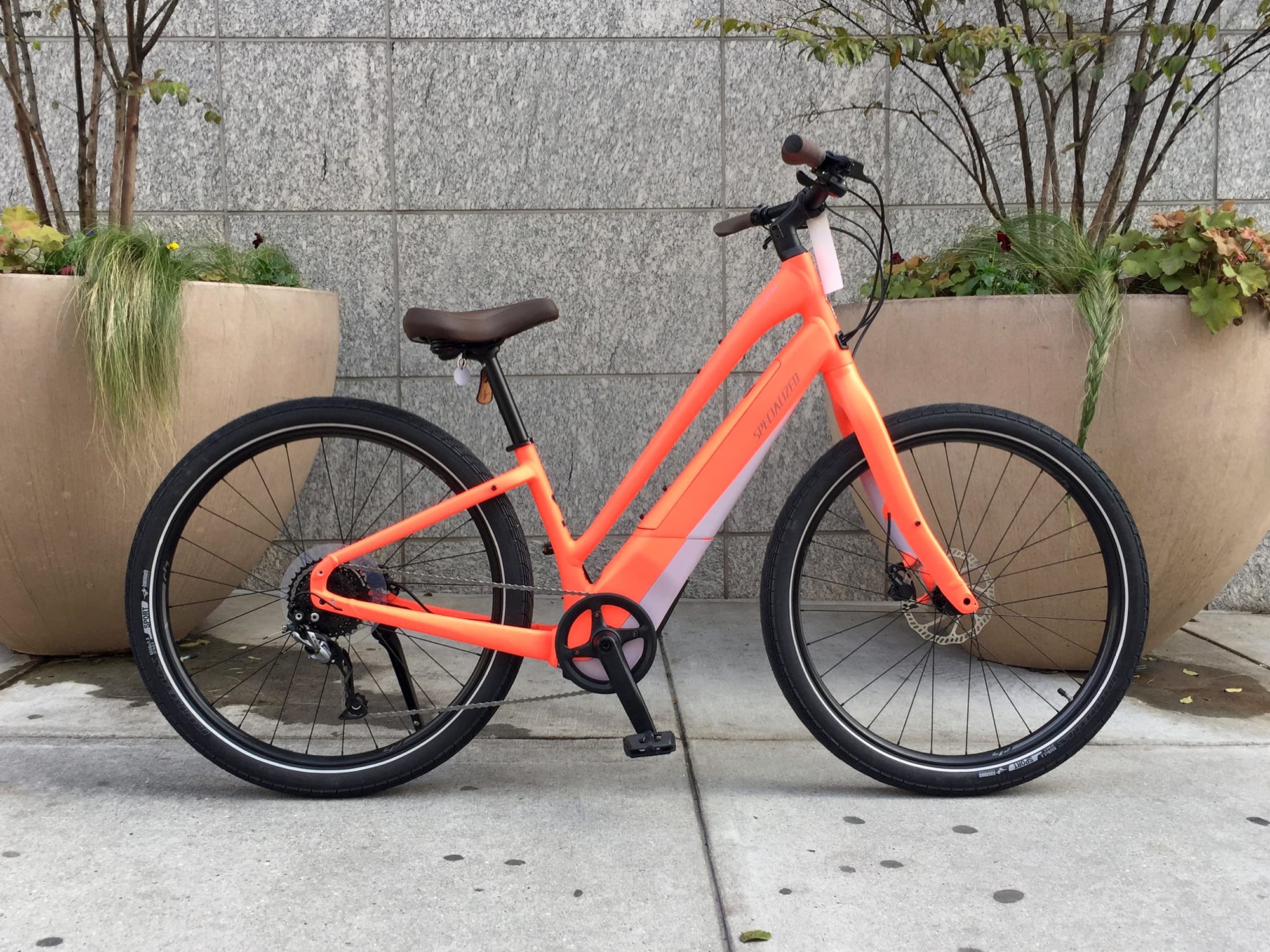
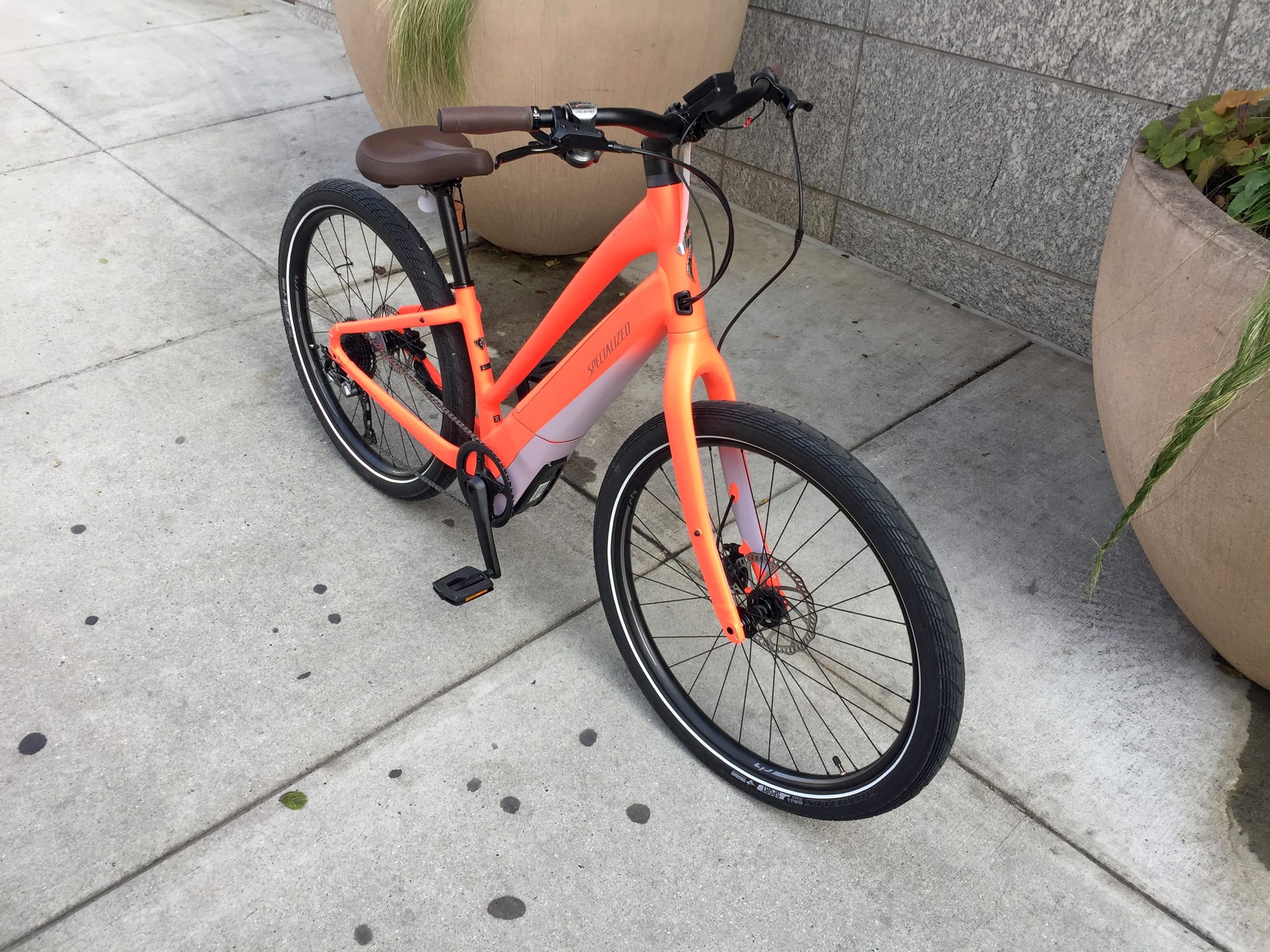
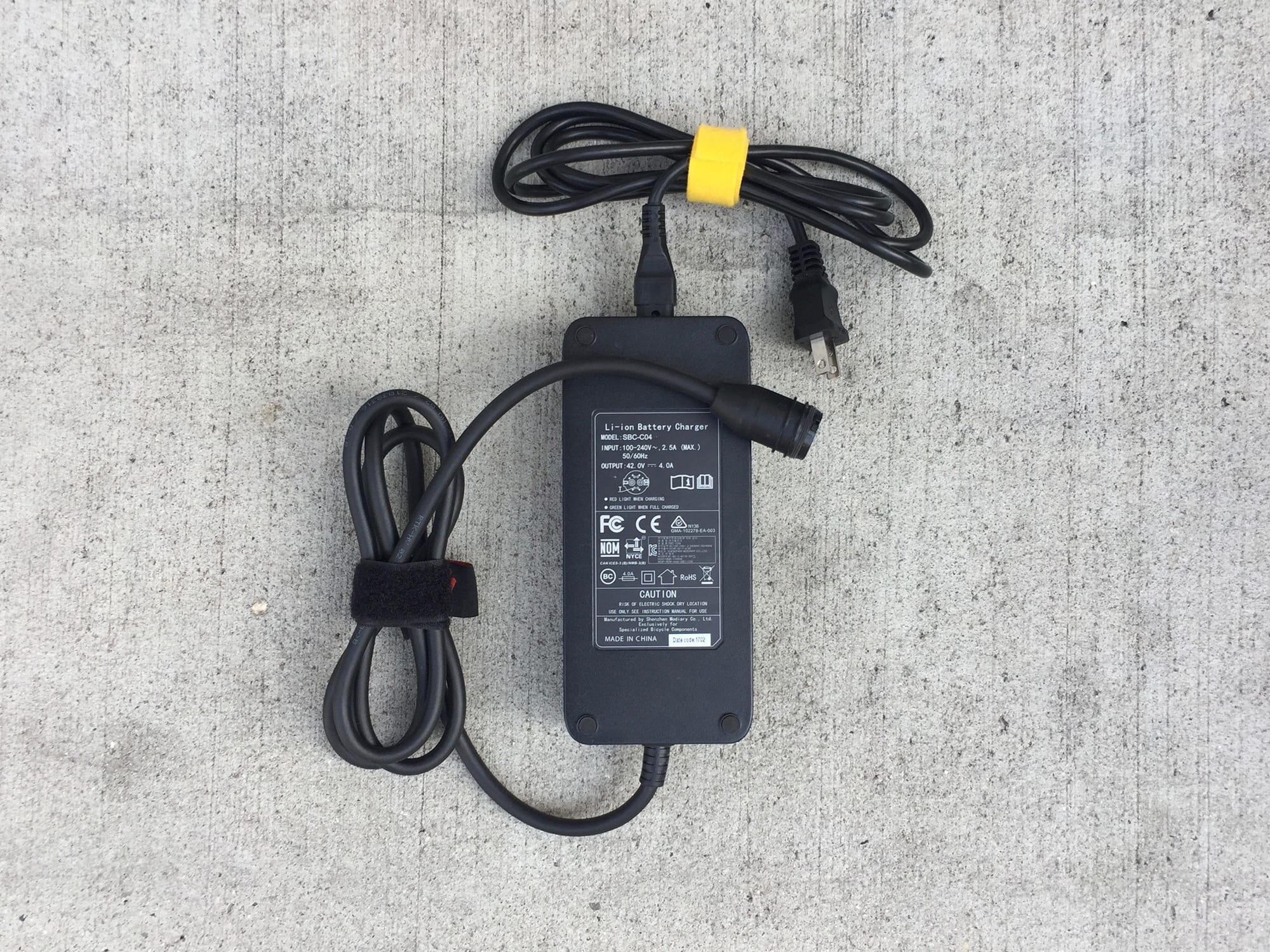

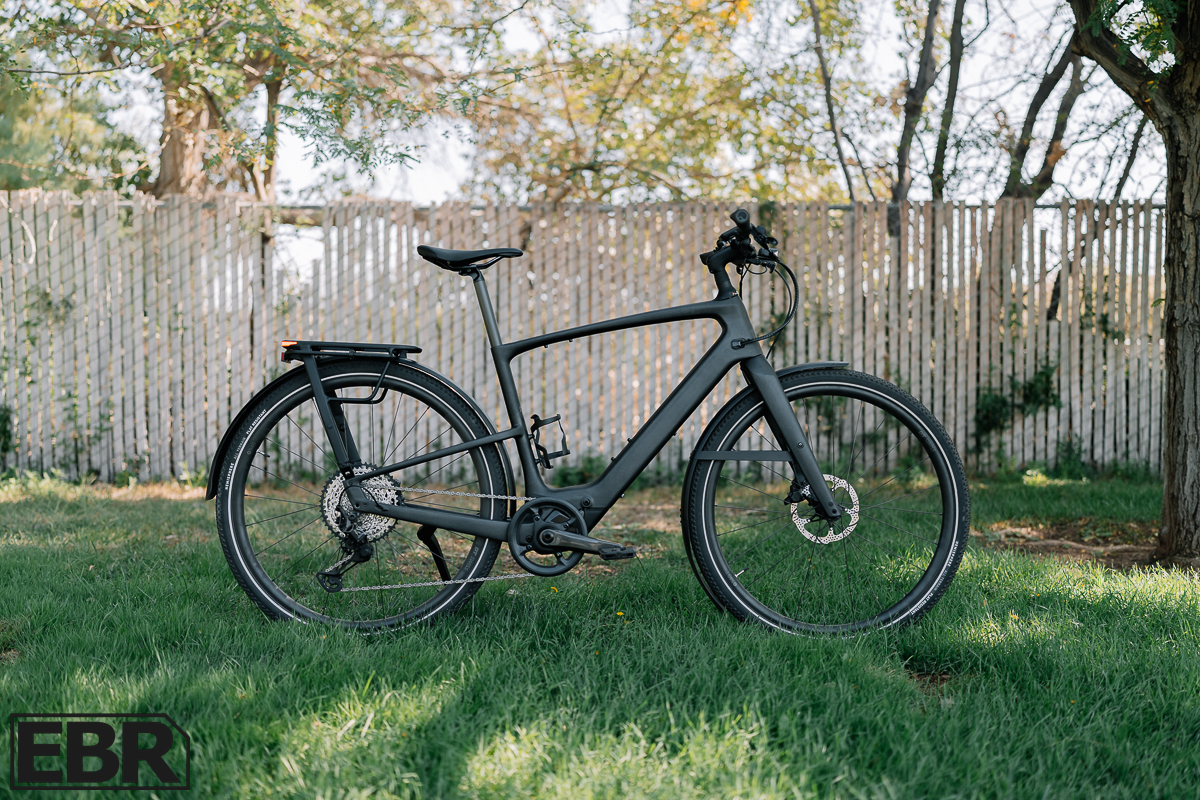
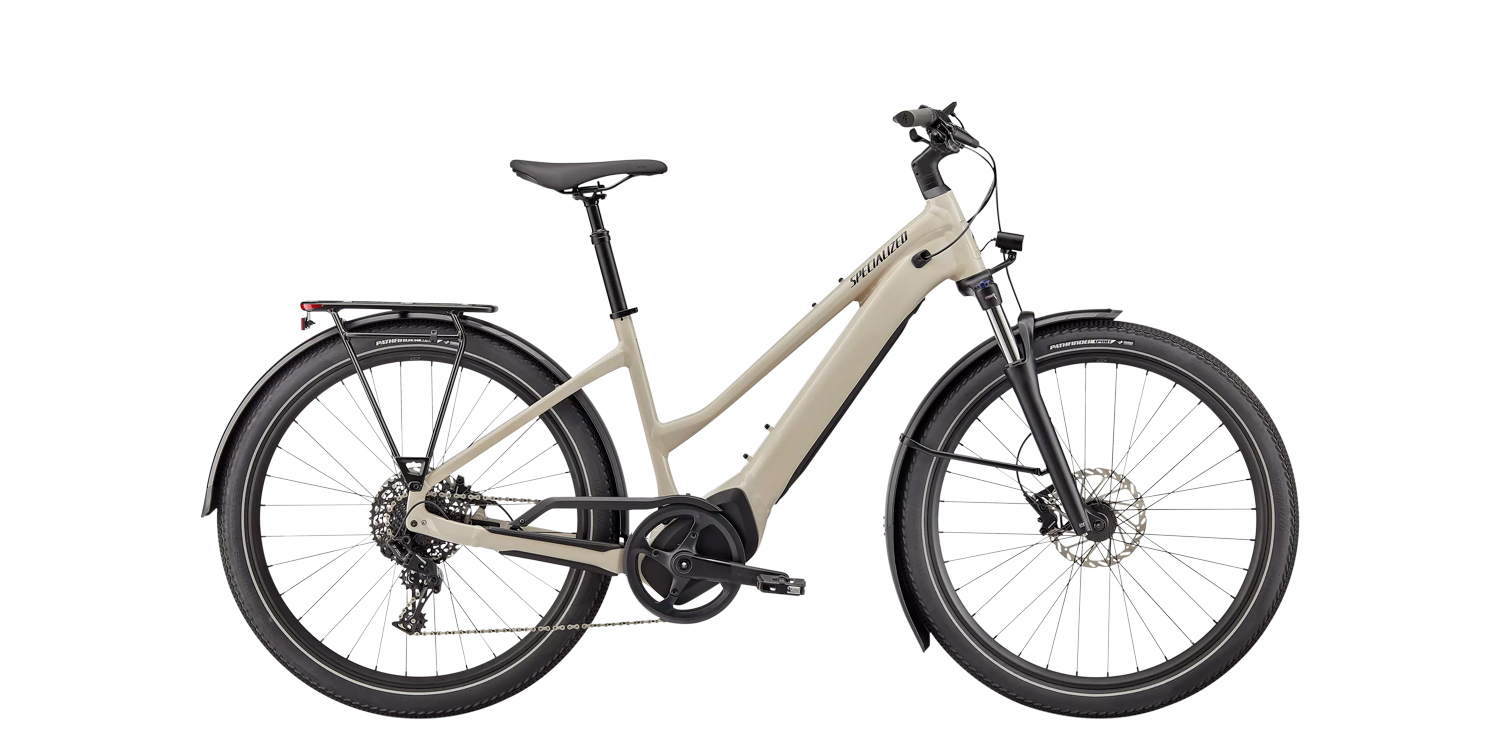
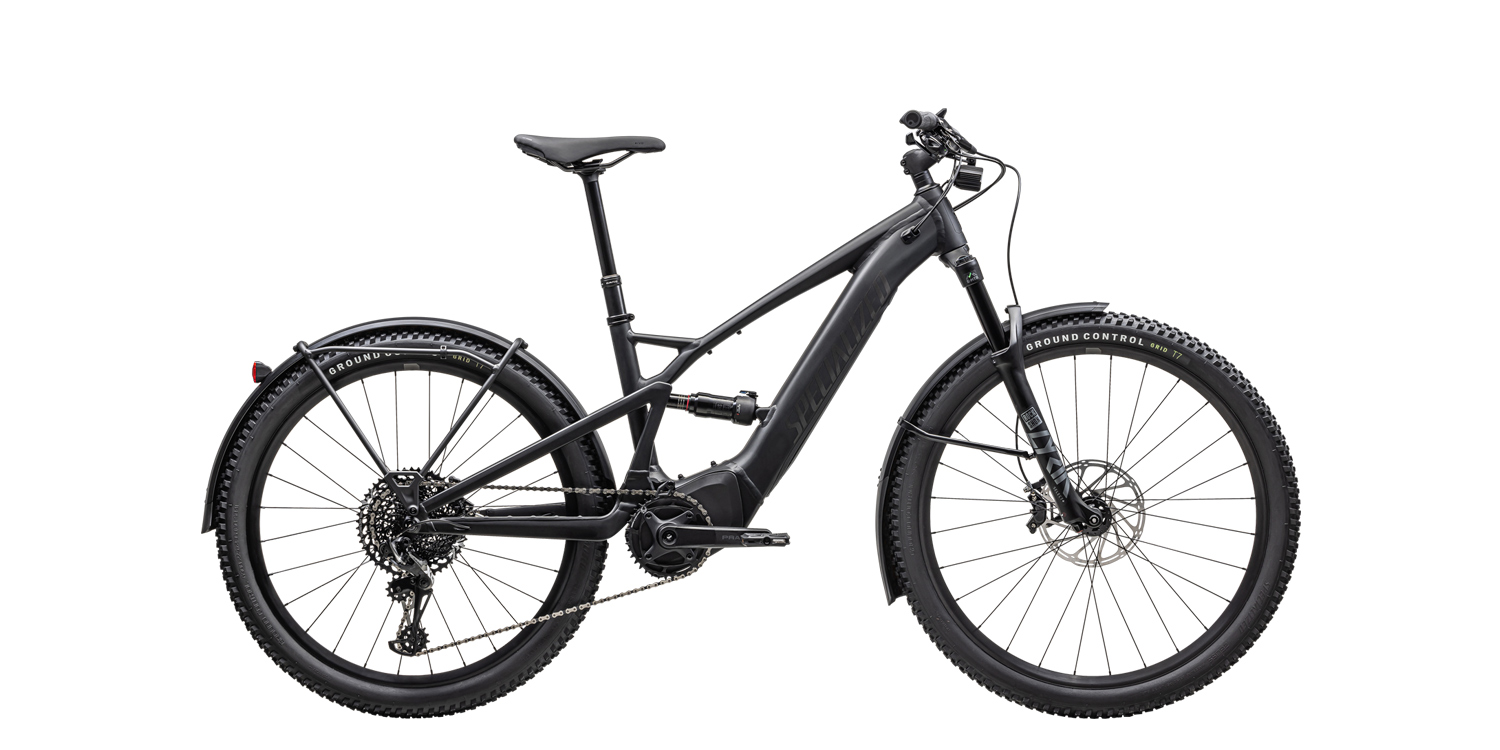
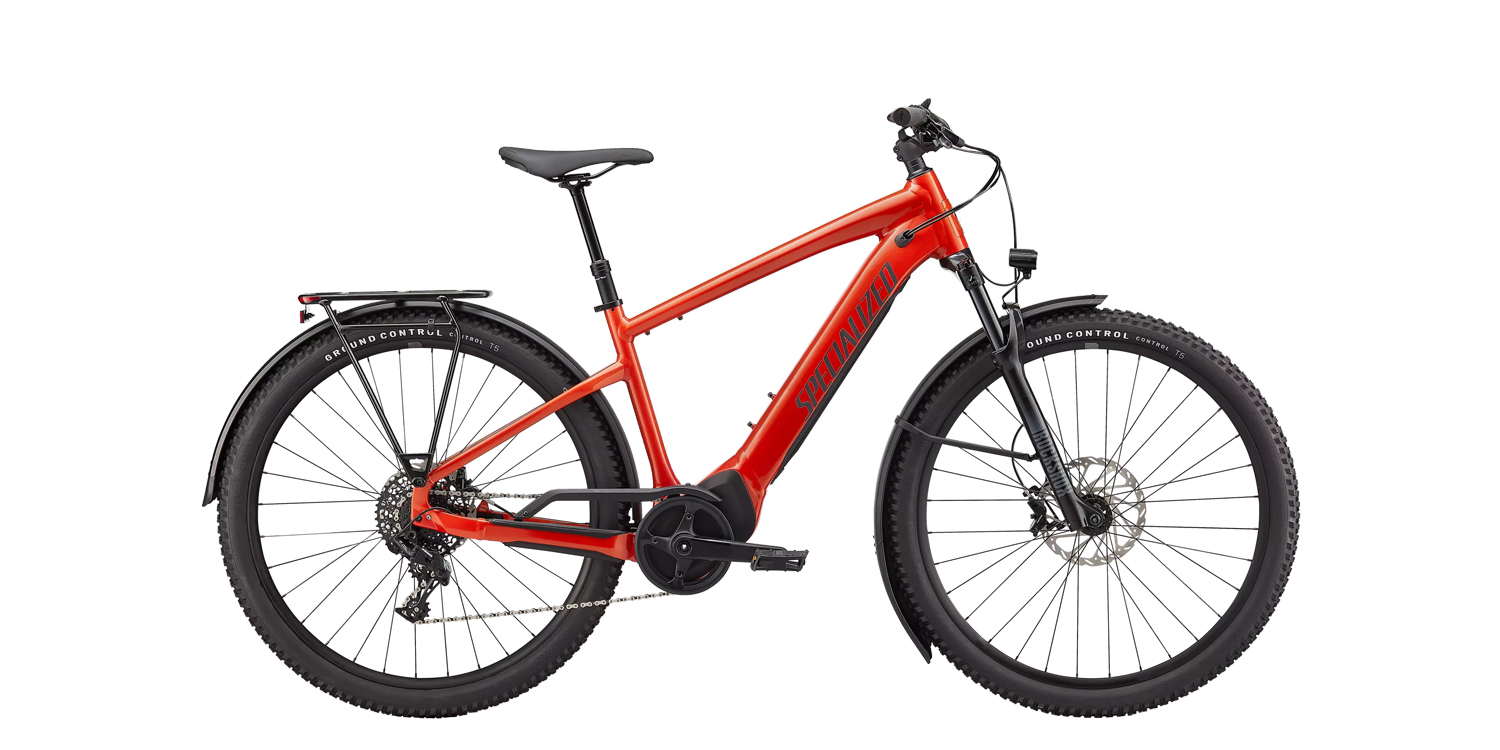
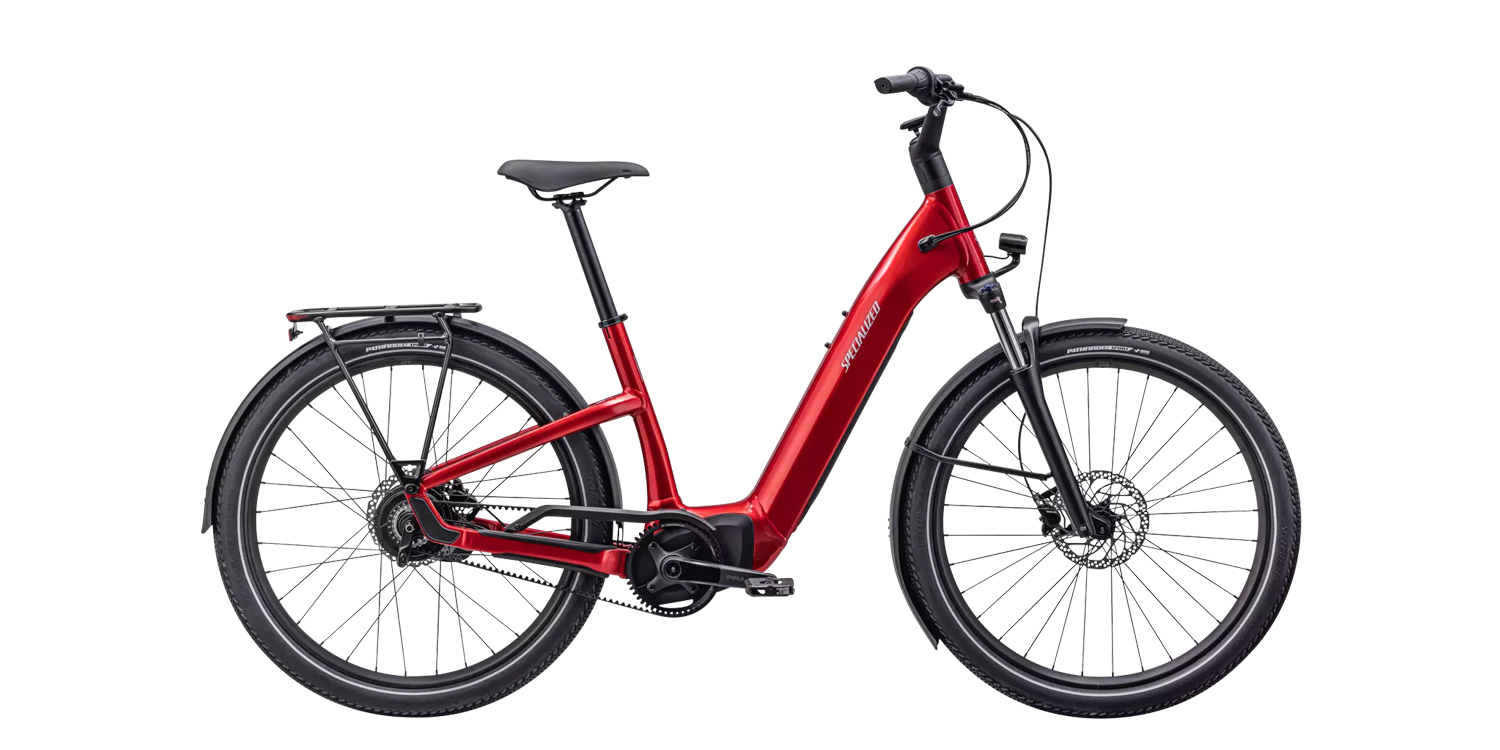
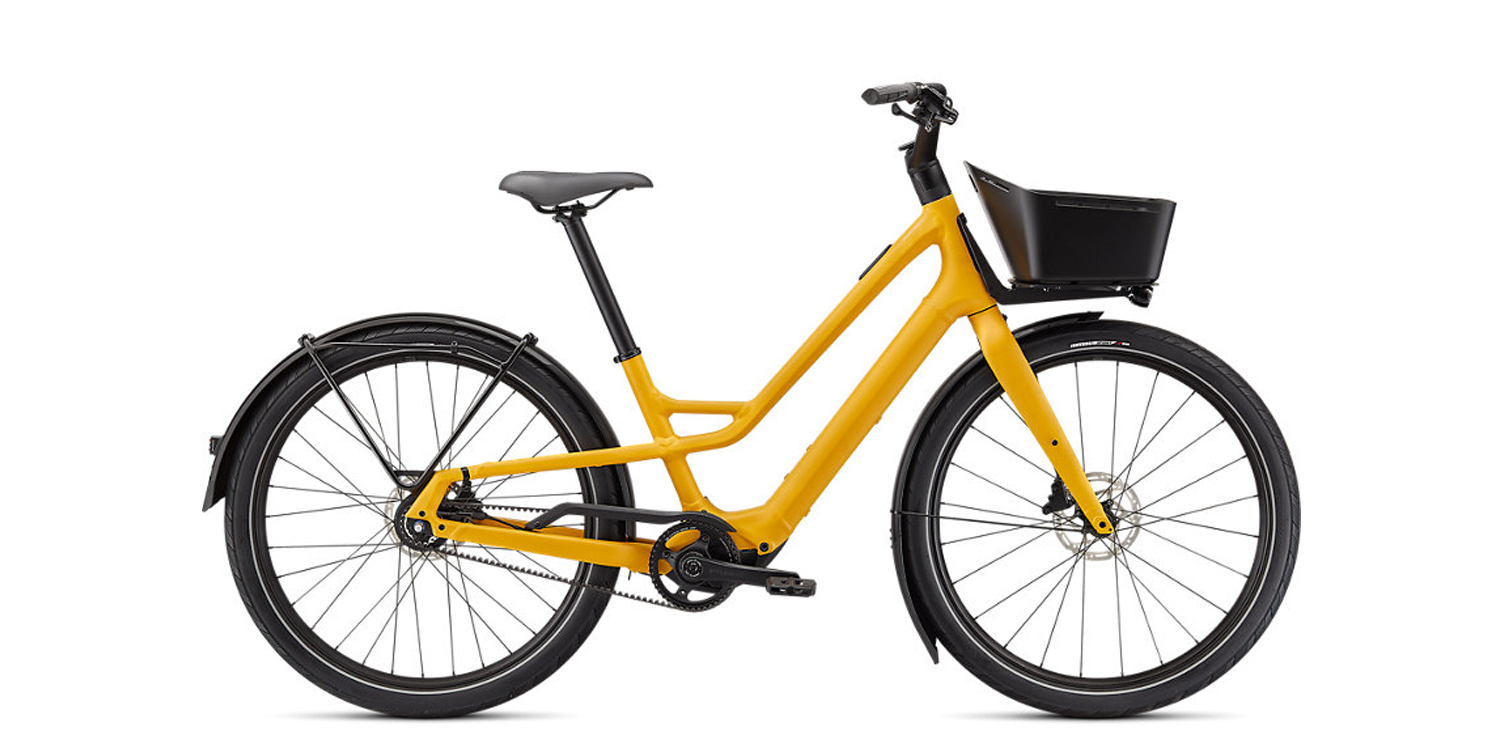
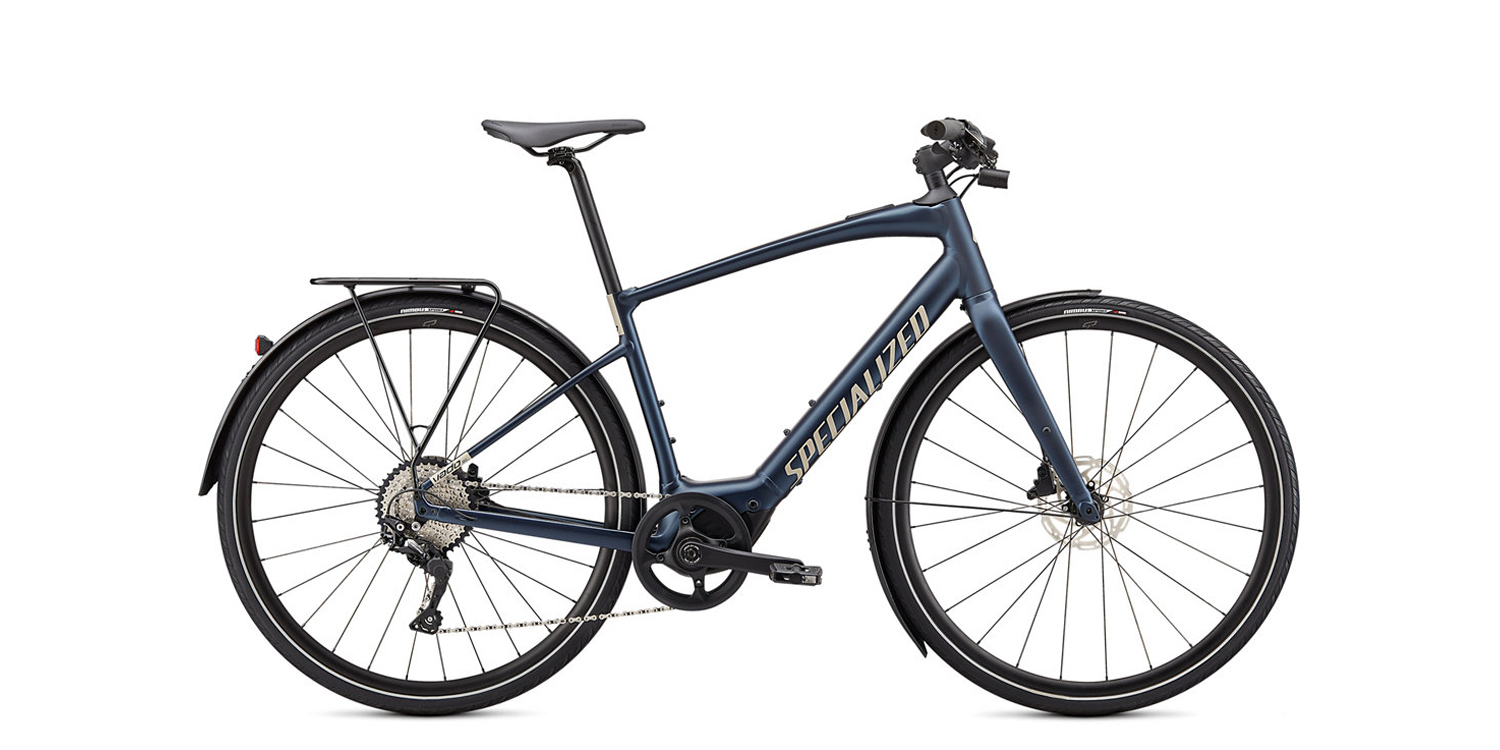
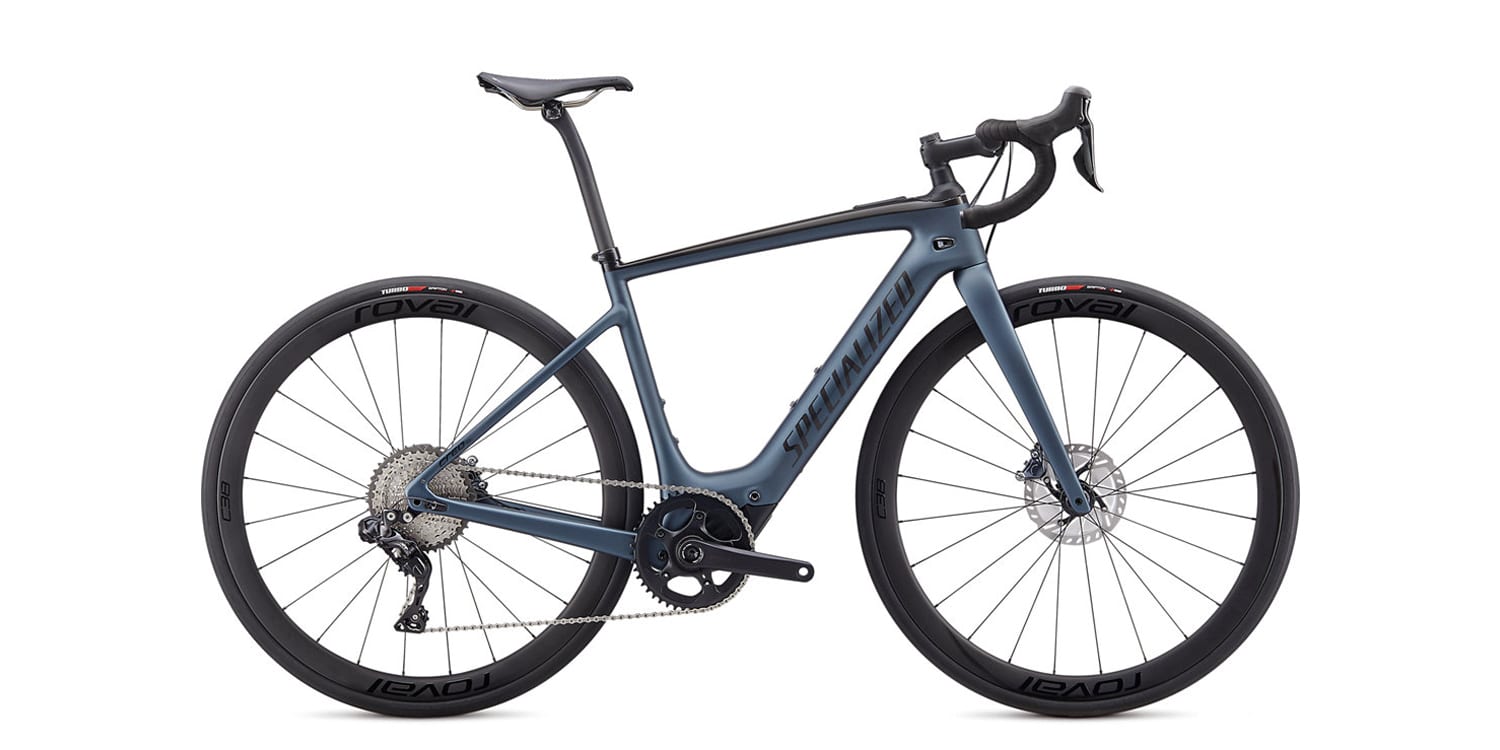
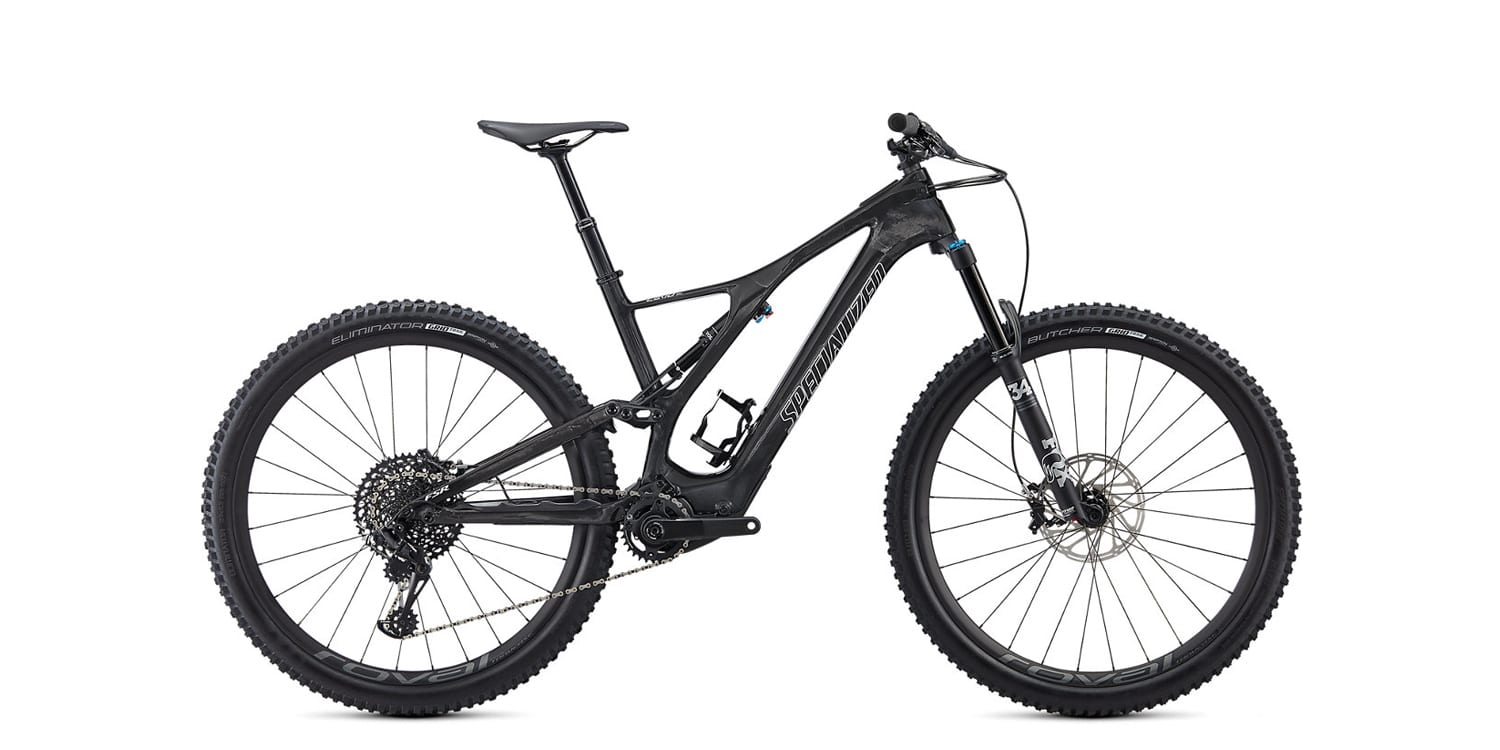
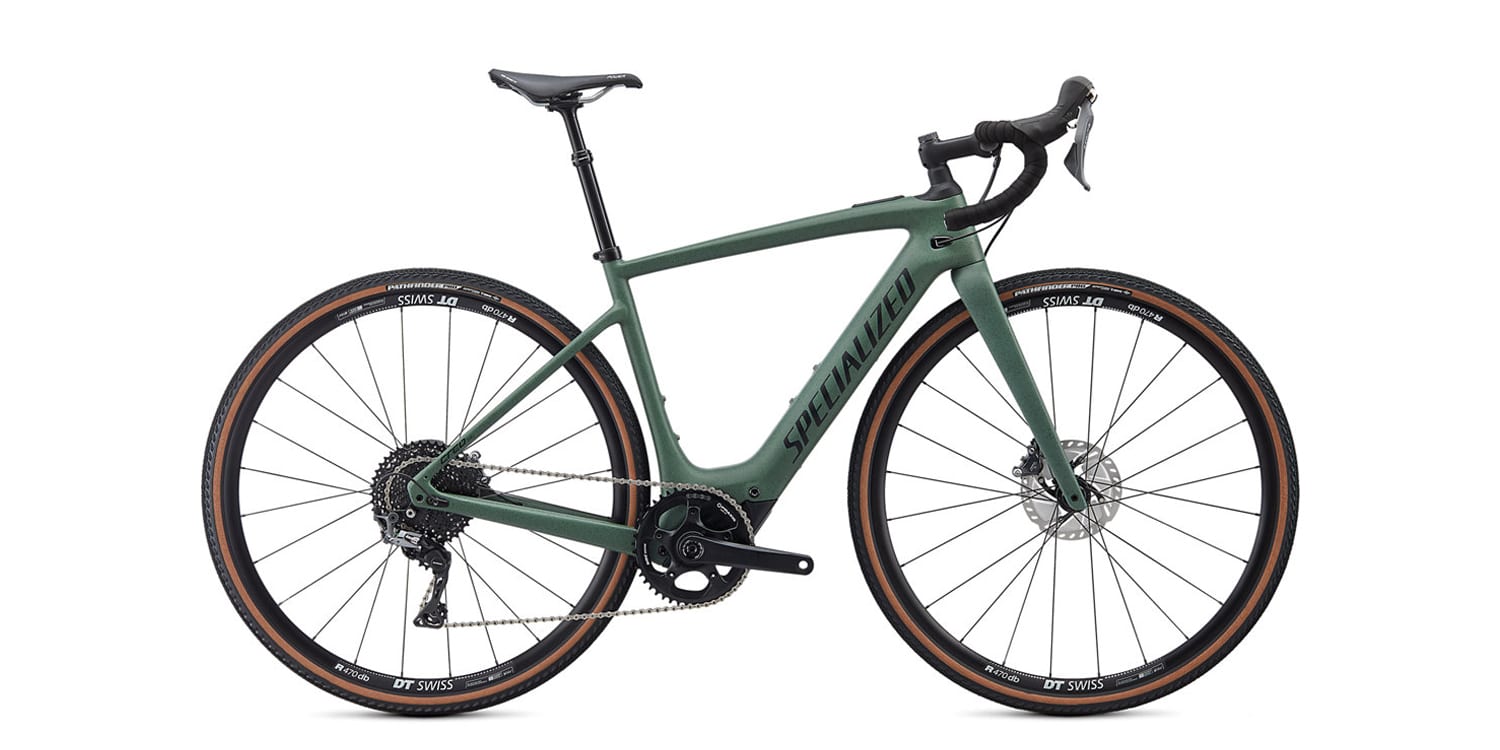
Reader Interactions